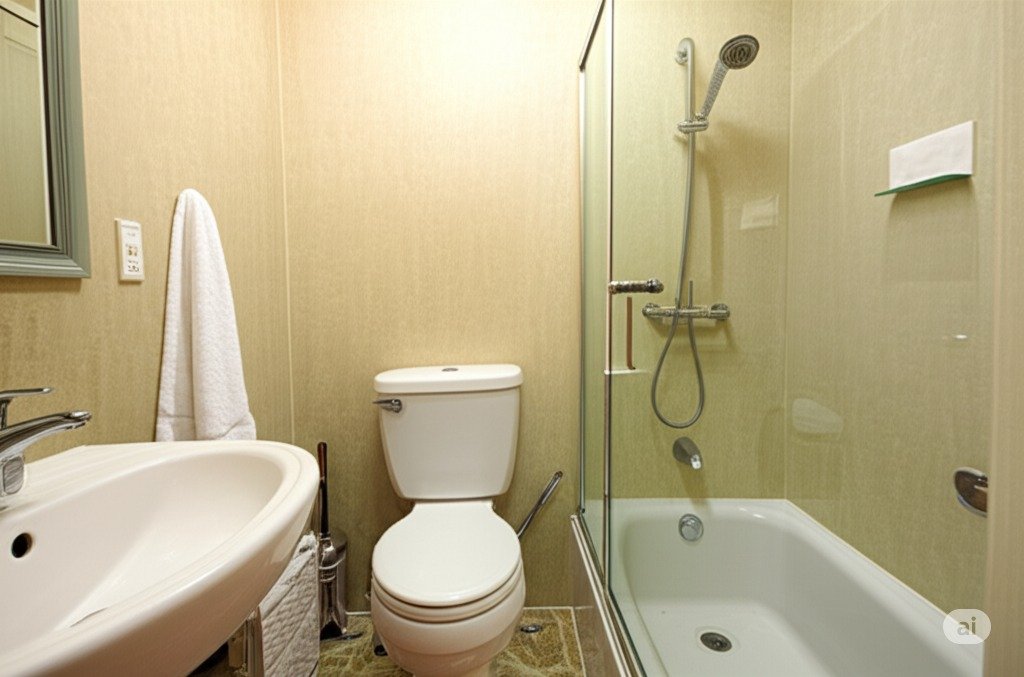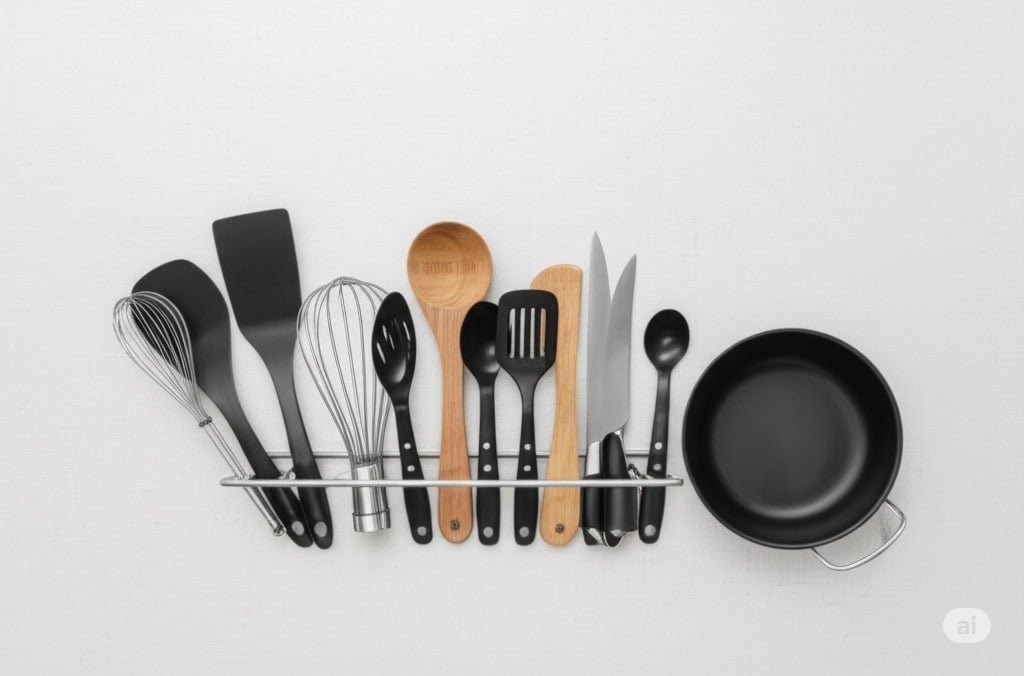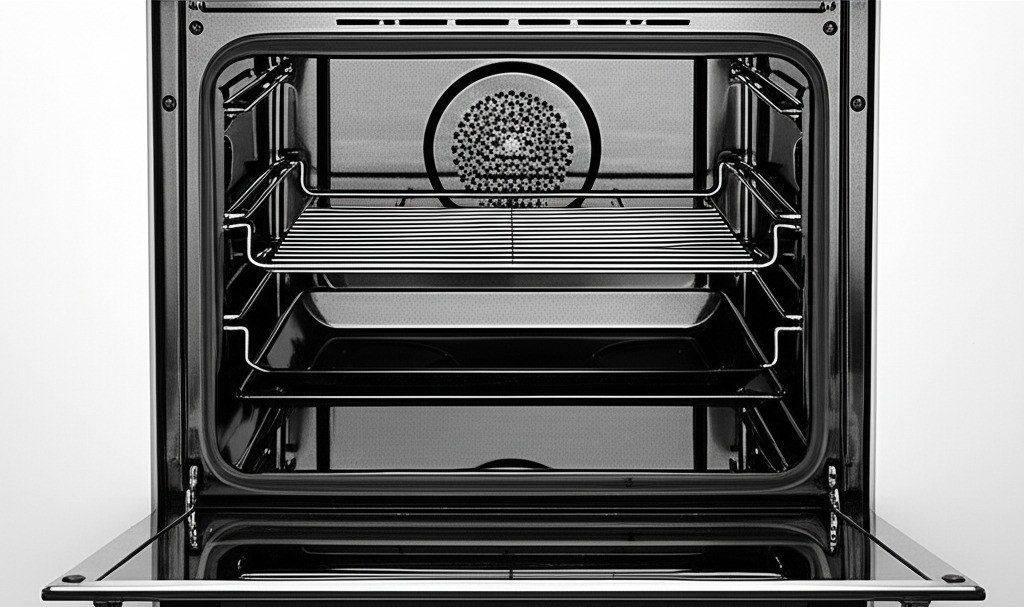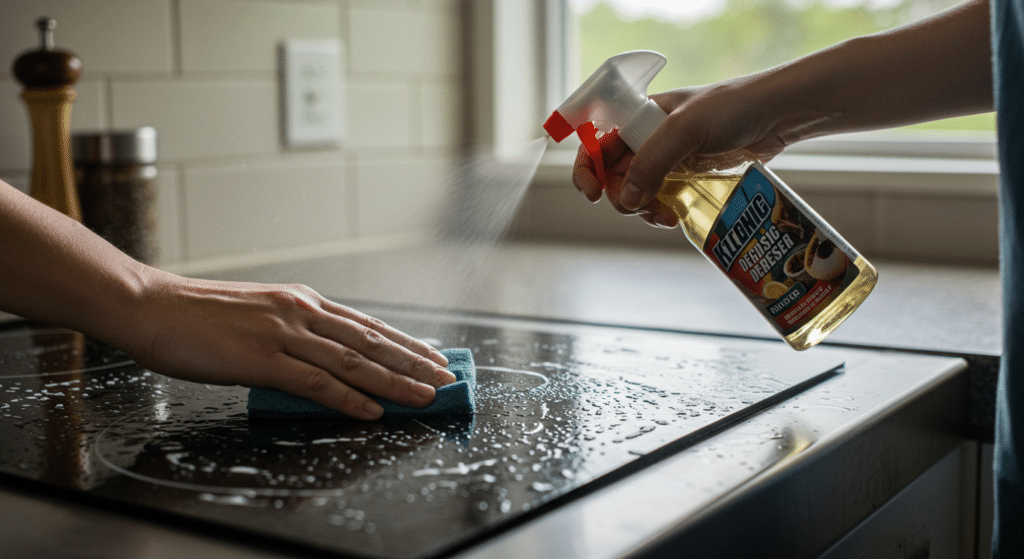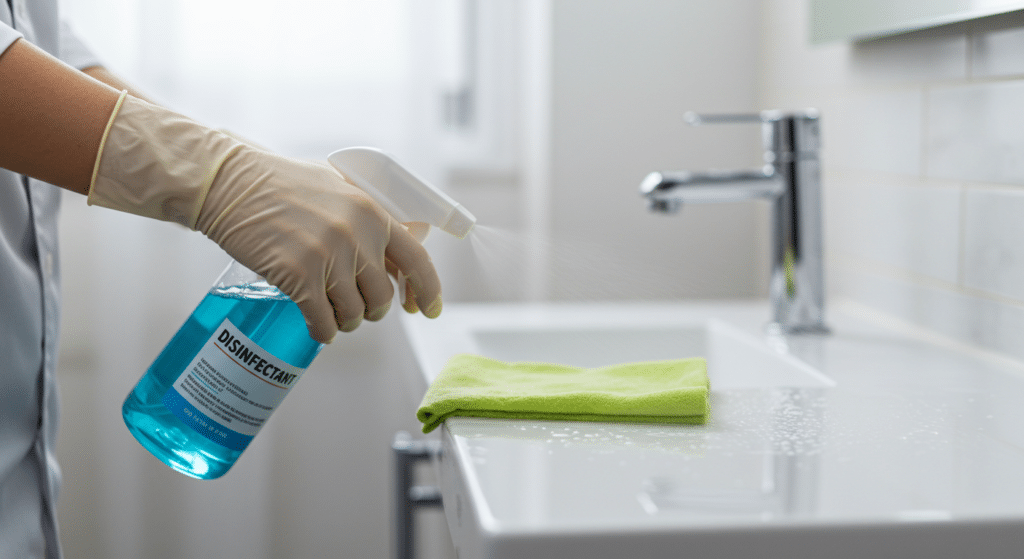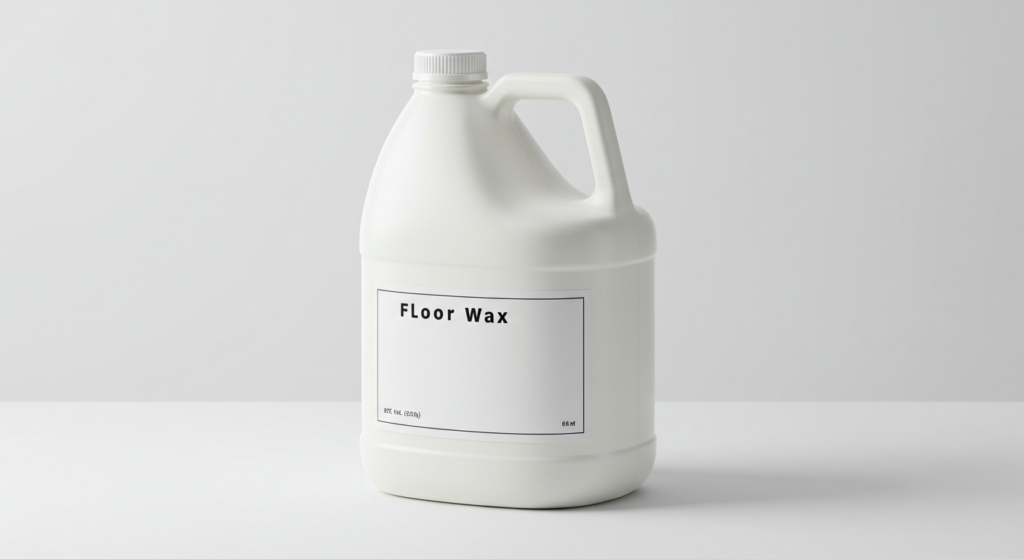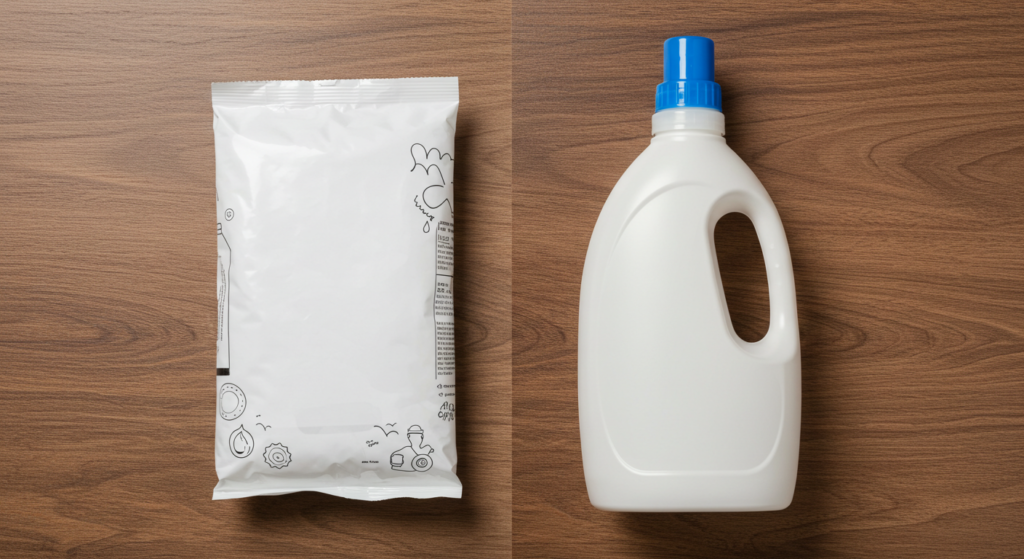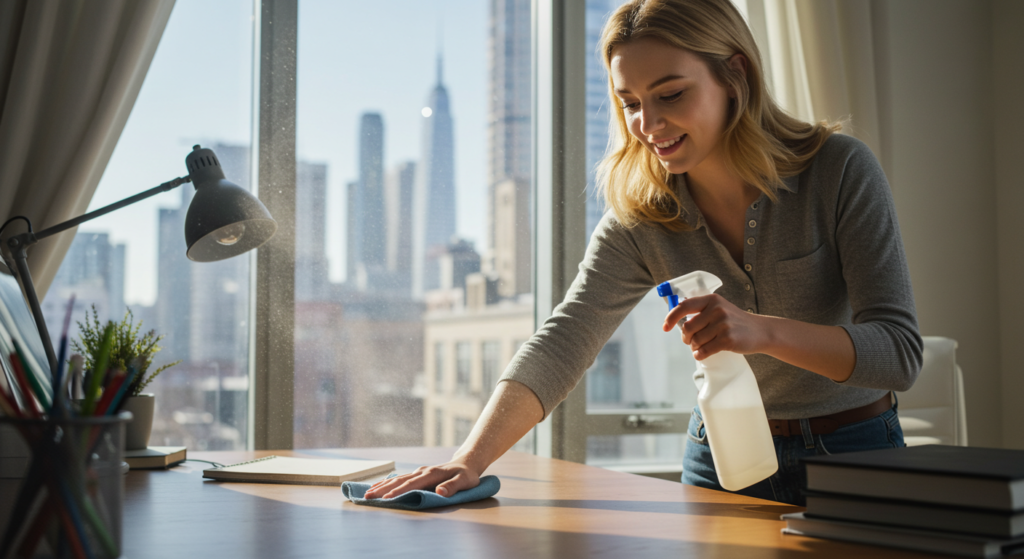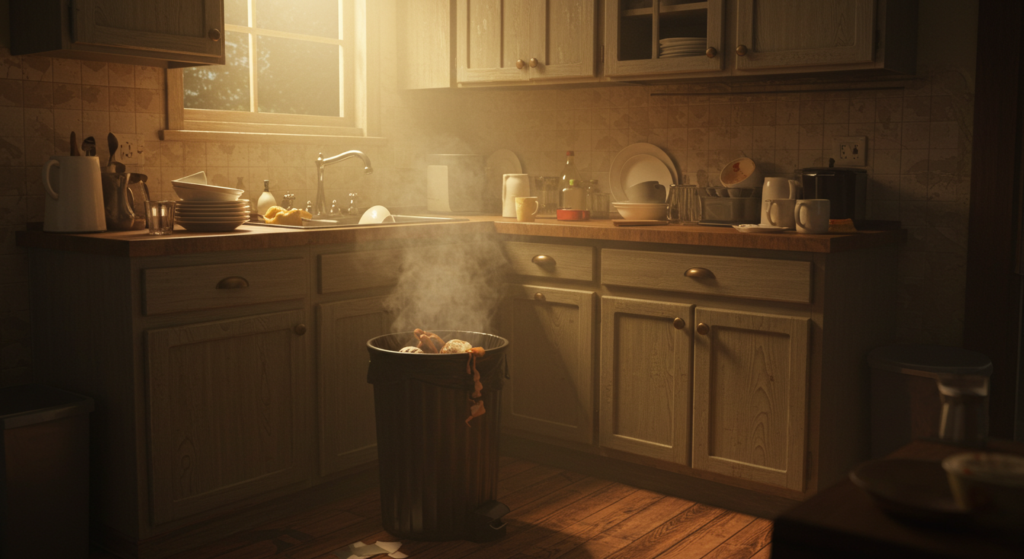5 Bathroom Cleaning Tips Every Toronto Home Should Follow
Sparkling and Serene Bathroom Sanctuary in Five Stages A truly clean bathroom isn’t just about surface shine; it’s about deep hygiene, a fresh atmosphere, and the peace of mind that comes from knowing this essential space is well cared for. Today, we’re going to move beyond the mere mechanics of a quick wipe-down and unveil the pathway to transforming your bathroom into a sparkling, serene haven, a place that genuinely contributes to your well-being, by guiding you through five focused stages. 1. Conquering the Commode with Diligence Our journey to a revitalized bathroom appropriately begins with the fixture that handles the most essential, yet often least glamorous, tasks: the toilet. Giving this cornerstone of the bathroom thorough and meticulous attention is paramount for establishing a truly hygienic environment. The process extends beyond a mere cursory swish within the bowl. We commence by applying a good quality toilet bowl cleaner, ensuring it reaches under the rim and is allowed to coat the surfaces as it works its way down. This initial application needs a few minutes to effectively tackle unseen build-up and begin its sanitizing work. Following this brief pause, a dedicated toilet brush is brought into action to scrub the interior of the bowl with diligence, ensuring every curve and surface is reached and thoroughly cleaned. However, our care for this fixture does not conclude there. The exterior surfaces of the toilet – including the tank, the lid, the seat (addressing both sides and the often-overlooked underside), the pedestal itself, and critically, the floor area immediately surrounding its base – all require careful wiping with a reliable disinfectant cleaner. This comprehensive approach ensures that this vital fixture is not just visibly clean to the eye but is also hygienically sound, making a significant contribution to the overall freshness and health of the bathroom. 2.The Bath and Shower Having addressed the toilet, our attention naturally gravitates towards the area specifically designed for washing away the day’s cares and starting afresh: the bath and shower. This zone, with its constant exposure to water and soap, can quickly become a challenging battleground against the persistent trio of soap scum, stubborn hard water stains, and, in environments prone to dampness, the unwelcome beginnings of mildew if not regularly and effectively addressed. The methodical approach here involves applying a suitable bathroom cleaner, one specifically formulated to break down and dissolve these common bathroom culprits, to all the integral surfaces. This includes the shower walls (whether they are composed of tile, fiberglass, or acrylic), the shower door (be it glass or plastic), or, if applicable, the shower curtain. Allowing this cleaning solution to sit for a few crucial moments gives it the necessary time to penetrate and effectively loosen the accumulated grime. Once the cleaner has had time to work, a non-abrasive scrub sponge or a dedicated bathroom brush is employed to gently but firmly work away the softened residue. For tiled shower enclosures, paying close attention to the grout lines is particularly important; a specialized grout brush or even an old toothbrush can be effectively utilized to clean these often-neglected areas. We must not forget the fixtures themselves – the showerhead, the taps, and the drain cover – which also benefit immensely from a good clean and a final polish to remove unsightly water spots and mineral build-up. If your bathroom features a bathtub, the same meticulous principles apply: a thorough cleaning of the entire basin, with particular attention paid to the waterline where residue frequently collects, and ensuring the taps and overflow drain are left sparkling. A meticulously cleaned shower or bath area is not merely about visual appeal; it fundamentally enhances the experience of using it, making it far more pleasant, hygienic, and invigorating. 3.The Vanity, Sink, and Mirror From the cleansing zone of the shower and bath, we logically progress to the vanity area, a multifaceted space that typically encompasses the sink, the surrounding countertops, and the mirror. The sink basin, much like the toilet, is a high-use fixture that sees constant activity. Consequently, toothpaste splatters, soap residue, and persistent water spots can accumulate with surprising speed. An effective, yet gentle, cream cleanser or a versatile spray bathroom cleaner can be used to thoroughly scrub the basin, ensuring the drain area is also free of debris and build-up. The faucets and handles, items that are touched multiple times throughout the day, deserve special attention; they should be wiped down carefully and polished to a brilliant shine, effectively removing fingerprints and water marks. The countertops that frame the sink also demand regular care, diligently wiping away any spills from toiletries, accumulated dust, or product residue. And then, of course, there is the mirror – a clear, impeccably streak-free mirror possesses the remarkable ability to instantly make the entire bathroom feel brighter, larger, and more welcoming. Applying a quality glass cleaner and wiping with a clean, lint-free microfiber cloth, often using methodical overlapping strokes, is the tried-and-true key to achieving that coveted, flawless streak-free finish. Taking an additional moment to neatly organize any items typically left on the countertop also contributes significantly to the overall feeling of a calm, uncluttered, and orderly space. 4.The Bathroom Floor The foundational surface of any room, and this certainly holds true for the bathroom, is its floor. This particular surface often bears the visible brunt of daily foot traffic, collecting stray hairs, inevitable water splashes, dust, and other assorted debris. Before any wet cleaning methods are introduced, it is absolutely essential to remove all loose particles and dirt from the floor. This preparatory step can be accomplished with a thorough sweep using a soft-bristled broom, paying attention to corners and edges, or, for an even more effective result, with a vacuum cleaner, utilizing an appropriate attachment to meticulously clean along baseboards and around the base of fixtures like the toilet and vanity. Once the floor is entirely free of loose dirt, hair, and other surface debris, it is ready to be mopped. The specific type
5 Bathroom Cleaning Tips Every Toronto Home Should Follow Read More »
